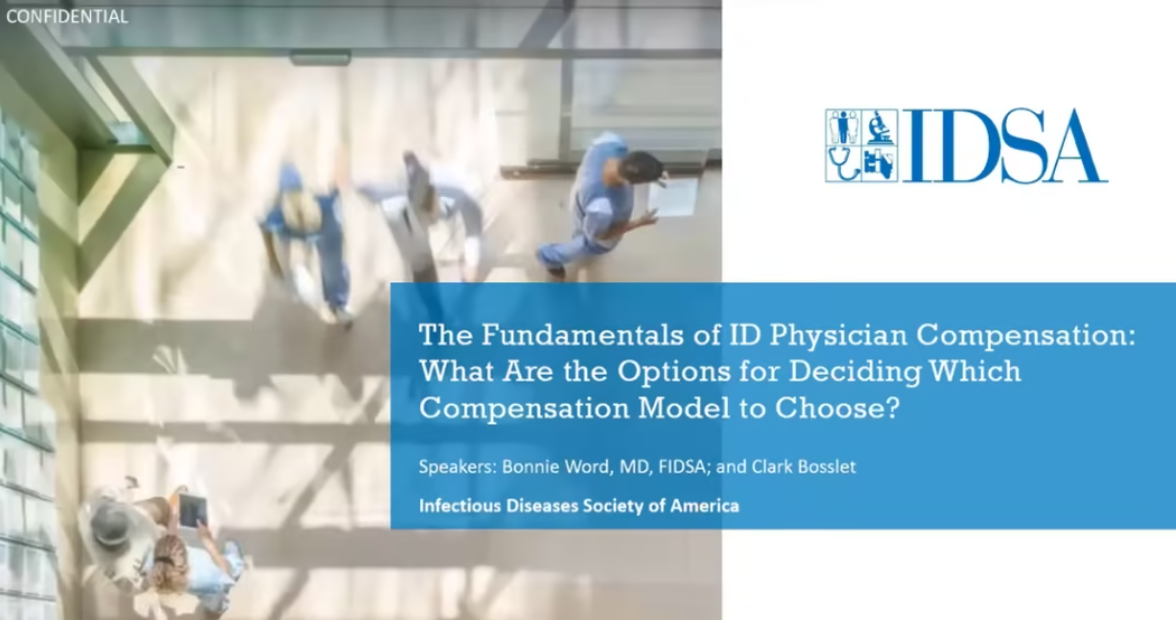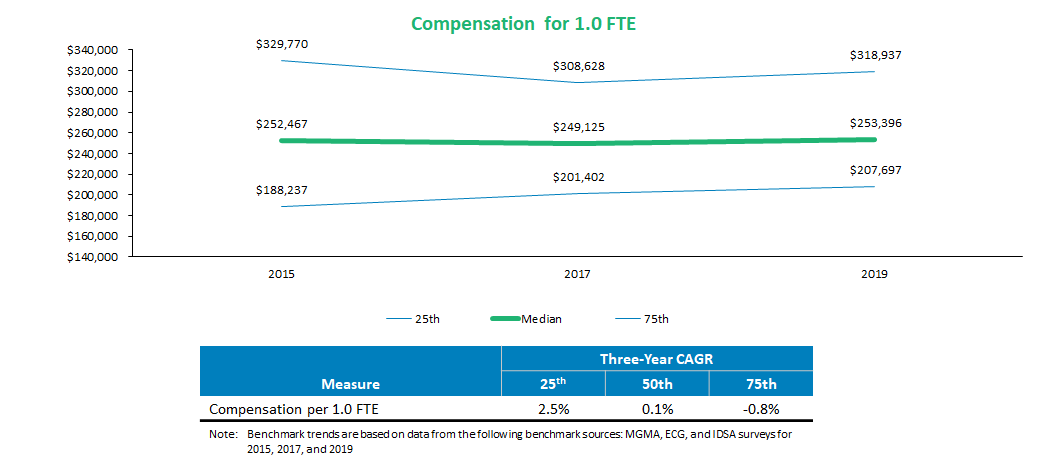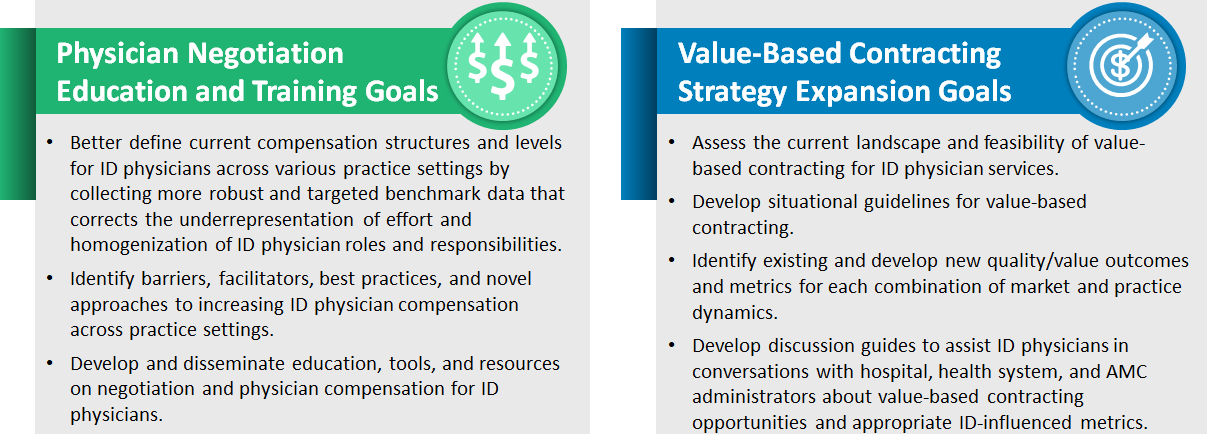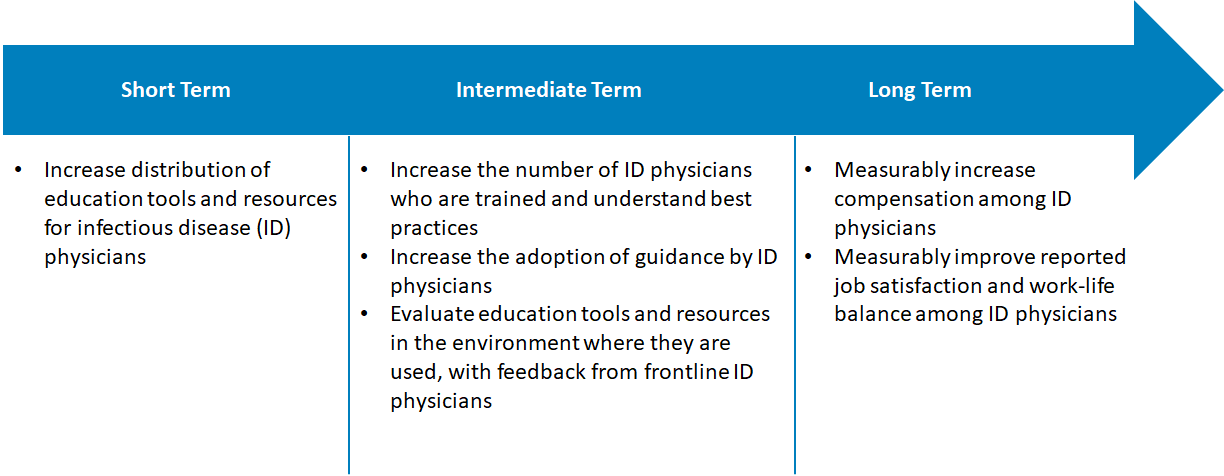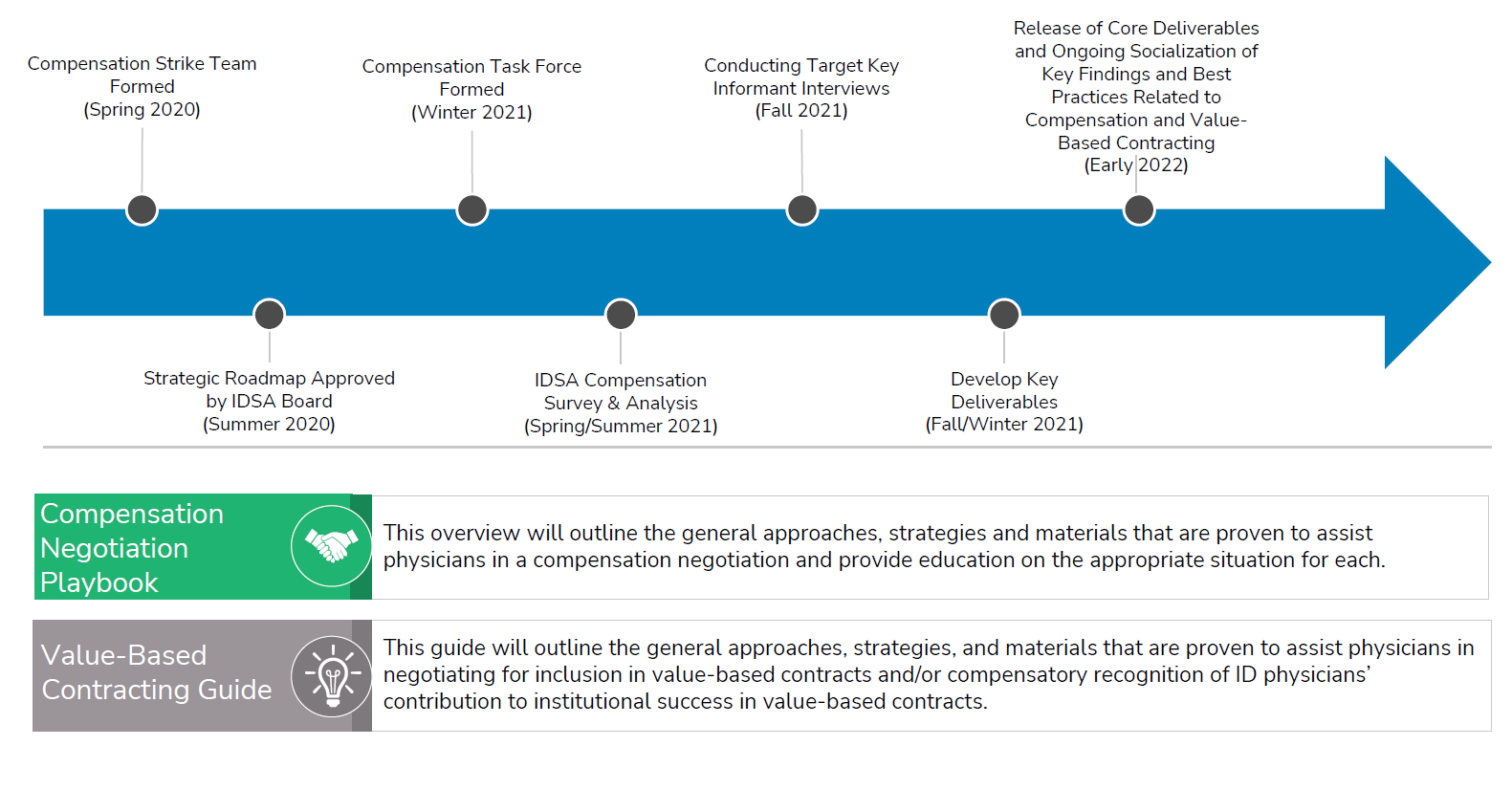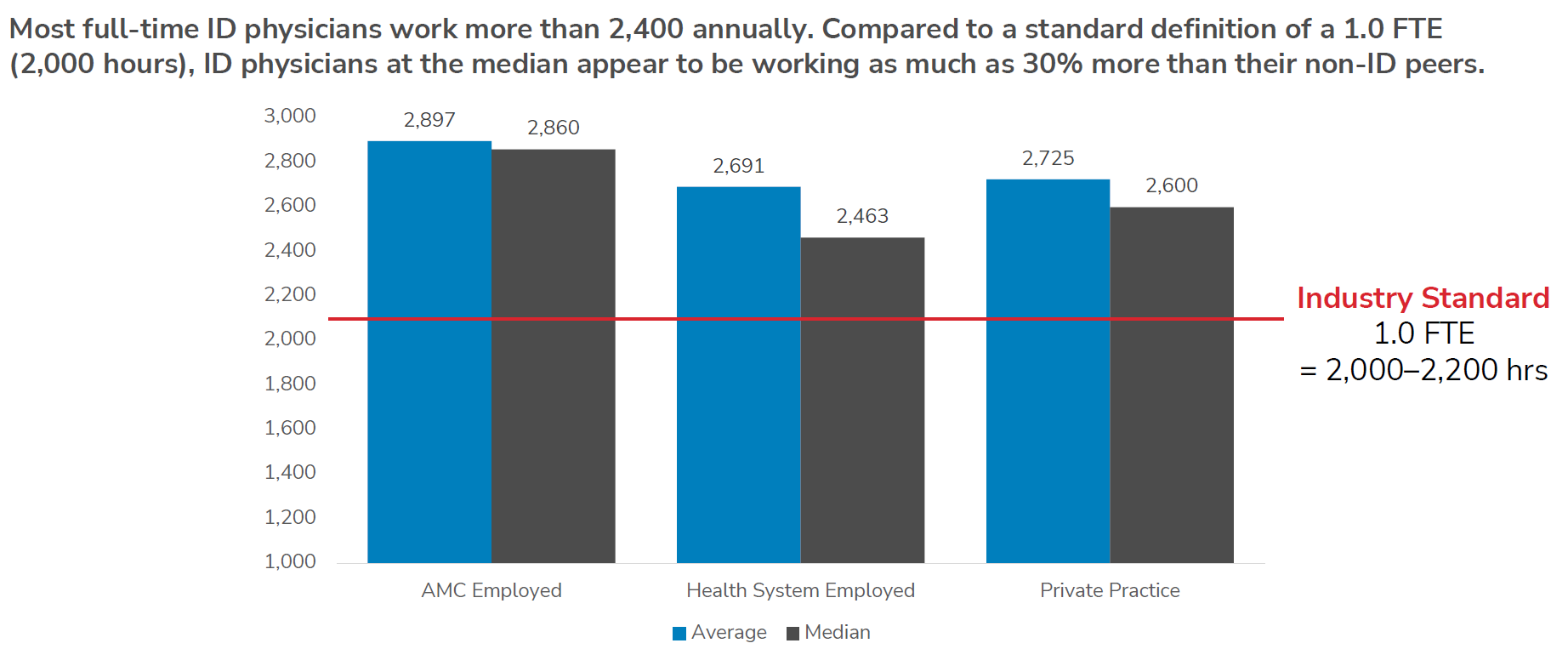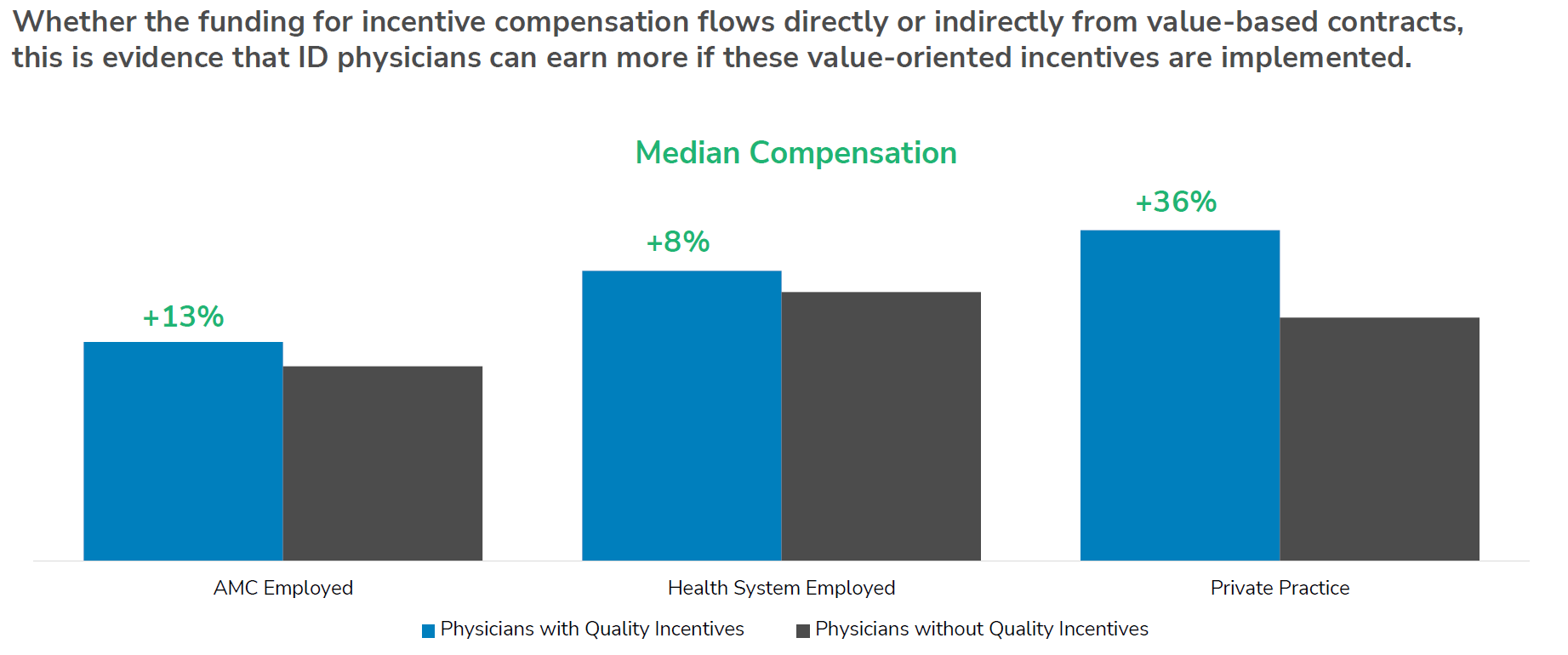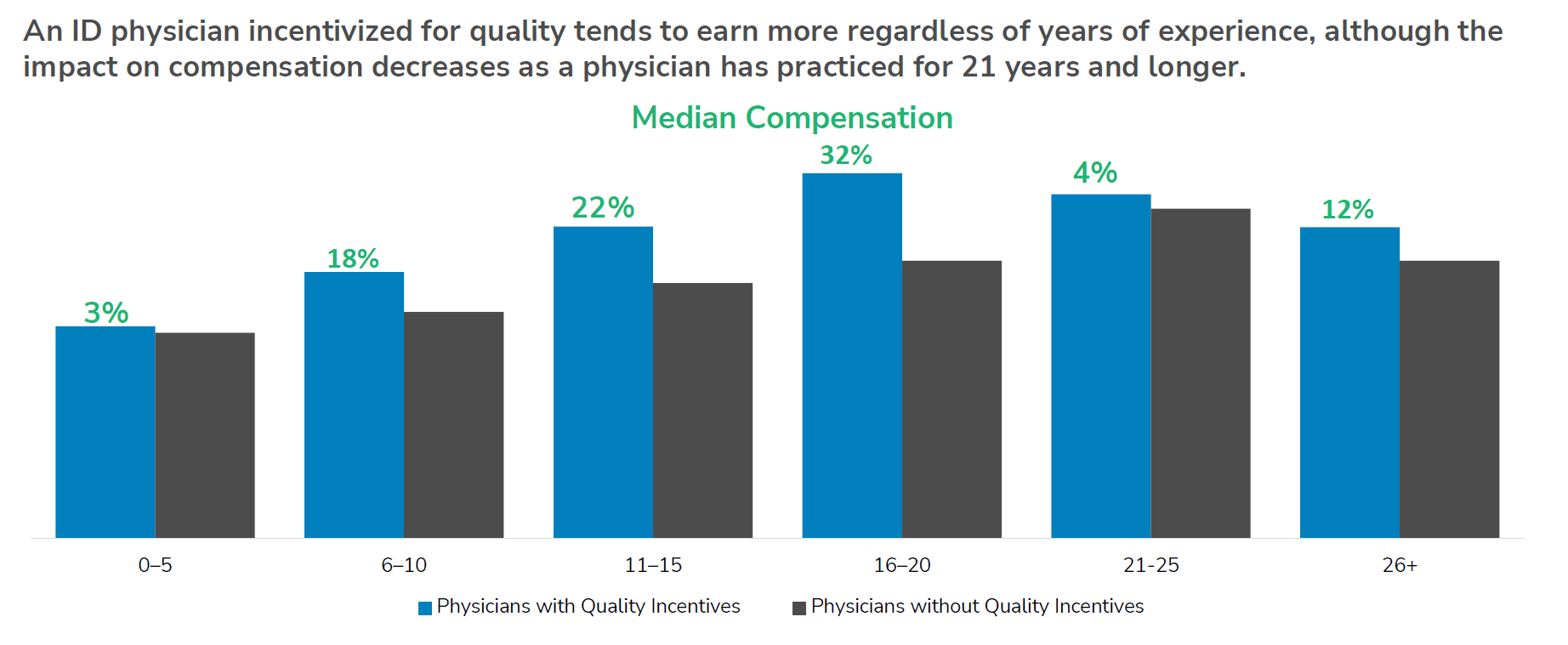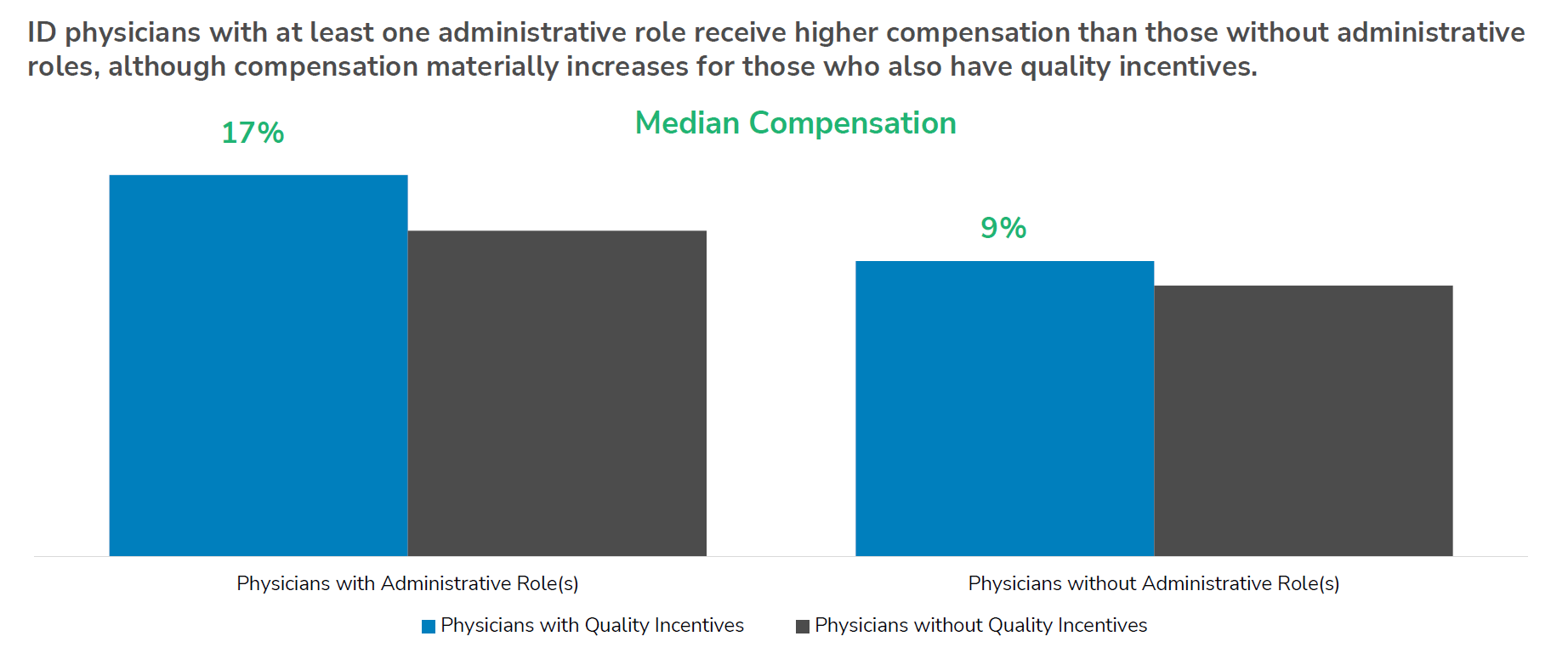On this page:
-
ID Compensation Conversations
-
The Problem: Compensation is a Major Issue Facing the ID Physician Workforce
-
The ID Physician Compensation Initiative
-
Physician Compensation Benchmarks
-
Physician Compensation Initiative Goals
-
Physician Compensation Initiative Implementation
-
ID Physician Compensation Data Collection, Analysis, and Results
ID Compensation Conversations
The Problem: Compensation is a Major Issue Facing the ID Physician Workforce
Recognition of the value ID physicians provide to patients and the healthcare system as a whole has been poor. The disparity in compensation that exists for ID compared to other fields of medicine in the United States has come into stark light during the pandemic, when ID physicians have been called upon to do more—and often with less.
IDSA physician compensation data, coupled with national multispecialty surveys such as MGMA, AMGA and Sullivan Cotter, have found that ID lags behind nearly all specialties in medicine. ID physicians work longer hours, have greater administrative work, and are paid less than the majority of their physician counterparts in other areas of medicine.
ID physician gaps involve more than just the obvious differences in compensation between cognitive specialists like infectious diseases and more procedural specialties. While a variety of specialties have experienced higher rates of compensation growth over the last five years, ID’s have been relatively flat over variety of compensation metrics compared to other specialties.
Growing our value and ensuring adequate compensation will be an important step toward enabling trainees—particularly those with large educational debt-- to consider ID as a viable career option. This, in turn, will help facilitate the growth and development of the ID workforce to meet existing and emerging needs.
The ID Physician Compensation Initiative
In 2020, the IDSA Board of Directors established a Compensation Strike Team, charged with developing a strategy and implementation plan for increasing ID physician compensation as a key component of IDSA’s Strategic Plan.
Physician Compensation Benchmarks
The Strike Team conducted a comprehensive review of IDSA and national survey data to identify trends and gaps related to the compensation and deployment of ID physicians working in a clinical setting. This review yielded several key findings:
- ID physician compensation and production trends have remained flat across all surveys since at least 2015
- Collections and collections per WRVU are both trending down.
- The decrease in collections correlates to an increase in compensation compared to collections.
- The majority of ID providers do not have compensation tied to quality.
- Only 48% of ID physicians with an employment contract negotiated their compensation.
- Among those that negotiated their compensation, only 29% were successful.
Physician Compensation Initiative Goals
Using these findings, the Strike Team identified two overarching goals:
- Physician Negotiation Education & Training: Develop a physician education and training campaign to equip IDSA members to be their own advocate, incorporating negotiation tools and a repository of informational resources aimed at increasing physician compensation
- Expand the Value-Based Contracting Strategy: Supplement ID-specific national and regional value-based contract participation advocacy with locally focused efforts at the hospital, diagnosis-related group-specific panel, and population levels
Physician Compensation Initiative Implementation
To implement this effort, a Compensation Task Force has been established, composed of ID physicians from a representative array of settings, to implement the Strike Team’s recommendations.
The Task Force has developed short, intermediate, and long-term objectives for this effort, as detailed below.
The timeline for these initiatives is summarized below.
ID Physician Compensation Data Collection, Analysis, and Results
Following a comprehensive review of existing ID physician compensation data, comparative data from other specialties, and industry trends, the Physician Compensation Task Force developed and administered a supplemental compensation survey last spring to the IDSA membership.
The goal of the survey was to gather additional, targeted data to further define and clarify the relationship between ID physicians’ services and compensation received. Specifically, the survey aimed to better define a “1.0 FTE” in actual hours worked; identify compensation plans across employment settings; determine annual compensation and percentage of compensation tied to incentives (quality or production); clarify administrative job titles and their allotted versus actual time commitment; and quantify the number of days on services, on average, that is tied to compensation for inpatient availability.
A high-level summary of findings is provided below.
Annual Hours Worked
Quality Incentives by Employment Type
Quality Incentives by Years of Experience



